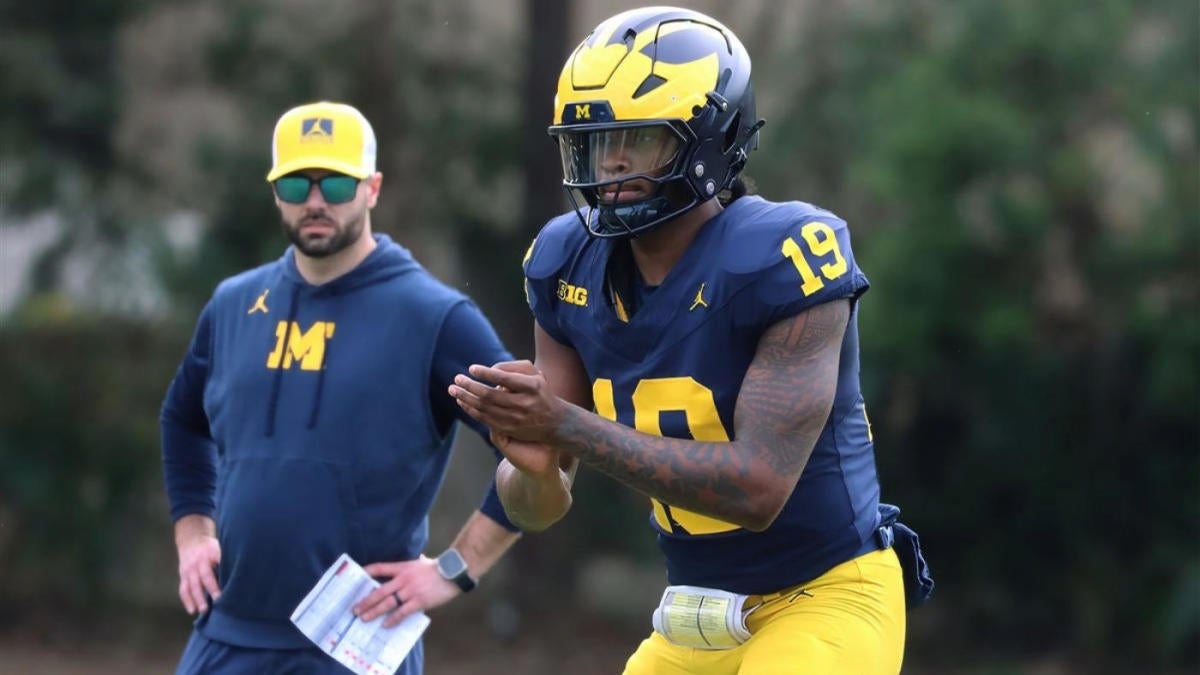Michigan quarterback Bryce Underwood, one of the most ballyhooed prospects to ever sign with the Wolverines, is already practicing with the team despite graduating from high school around two weeks ago. The class of 2025’s No. 1 recruit can even dress out and stand on the sidelines for Michigan’s ReliaQuest Bowl showdown against No. 11 Alabama on New Year’s Eve, where he immediately becomes the most talented Michigan quarterback in uniform.
Underwood can participate in every step of Michigan’s postseason — except for the actual game. The NCAA does not allow mid-year enrollees to participate in postseason games even if they are able to practice with their new team. It’s a bylaw based on logic that predates modern college football — instituted before the current system of transfer portal windows and was before the NCAA overhauled its redshirt rules and deemed that postseason games don’t count towards eligibility, which means that players can participate in more than four games so long as those extra contests come after the regular season.
This rule isn’t unique to Underwood, of course, whose whirlwind recruitment and seismic flip from LSU led to him being the highest-ranked signal caller to ever sign with Michigan. But imagine how much spice letting a guy like him play would bring to bowl season.
Why early enrollees should be allowed in bowl games
Though the NCAA is notoriously slow to modernize, and most of its impactful changes come as the result of lawsuits, it should match the direction of college football and allow mid-year enrollees to participate in bowl games.
It makes too much sense. Rosters are decimated by the transfer portal and bowl game opt outs. This year, the winter transfer portal officially opened on Dec. 9 and closed on Dec. 28. Over 1,900 FBS players entered the portal in that time, many of which came from teams that either have played in bowl games or will participate in postseason contests around New Year’s Day.
Even College Football Playoff teams weren’t immune to portal losses. Penn State lost key backup quarterback Beau Pribula, while Tennessee had four wide receivers decide to transfer before its first-round game against Ohio State.
There’s no doubt that opt outs have taken some of the shine off of college football’s bowl season. It’s rare to see a player with significant NFL Draft stock participate in his team’s bowl game. Michigan, for example, has had nine players opt out of the ReliaQuest Bowl, including its top two running backs, starting tight end Colston Loveland and key defensive linemen Mason Graham and Kenneth Grant.
Allowing mid-year enrollees to participate could alleviate some of the roster crunch that coaches feel this time of year and provide valuable depth during a time where it’s difficult to maintain numbers. It also provides those soon-to-be freshmen some real-game, relatively low-stakes experience to aid in their development and help them acclimate to the collegiate level.
Not to mention it provides more incentive to tune into the bowl games, since mid-year enrollees would provide an enticing peek at the future of the sport.
There’s no reason to not allow at this point. Since postseason games don’t count towards eligibility, mid-year enrollees wouldn’t have to worry about wasting a year on one bowl game.
Changing the rule would also allow coaches the flexibility to make their own decisions. There’s a good chance that, even if mid-year enrollees were allowed to play, plenty of teams wouldn’t utilize them — at least in a big role — given that many of these players would be fresh out of high school.
It would, at the very least, give players like Underwood an opportunity to show that they are able to contribute when their actual first season begins.

